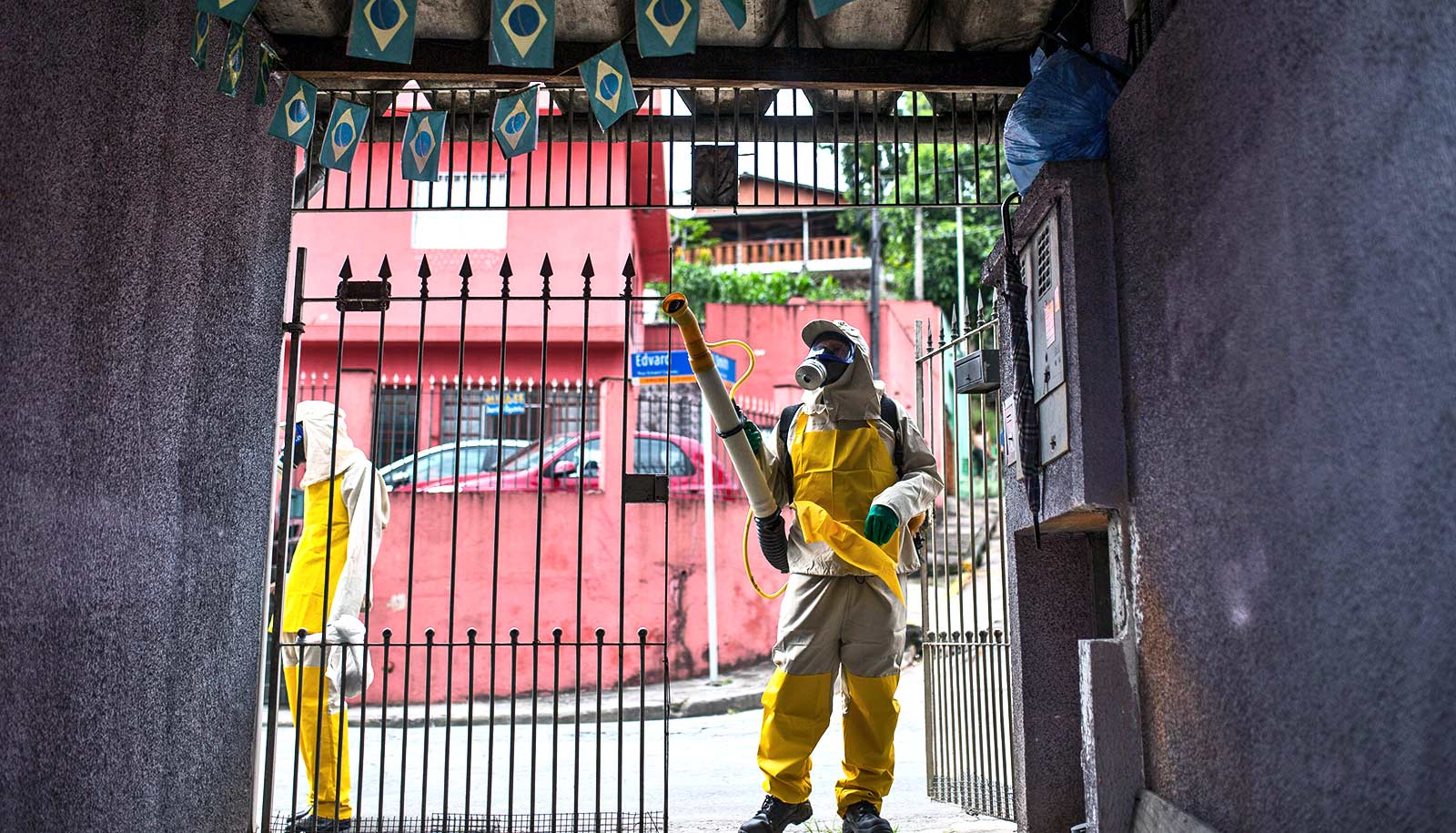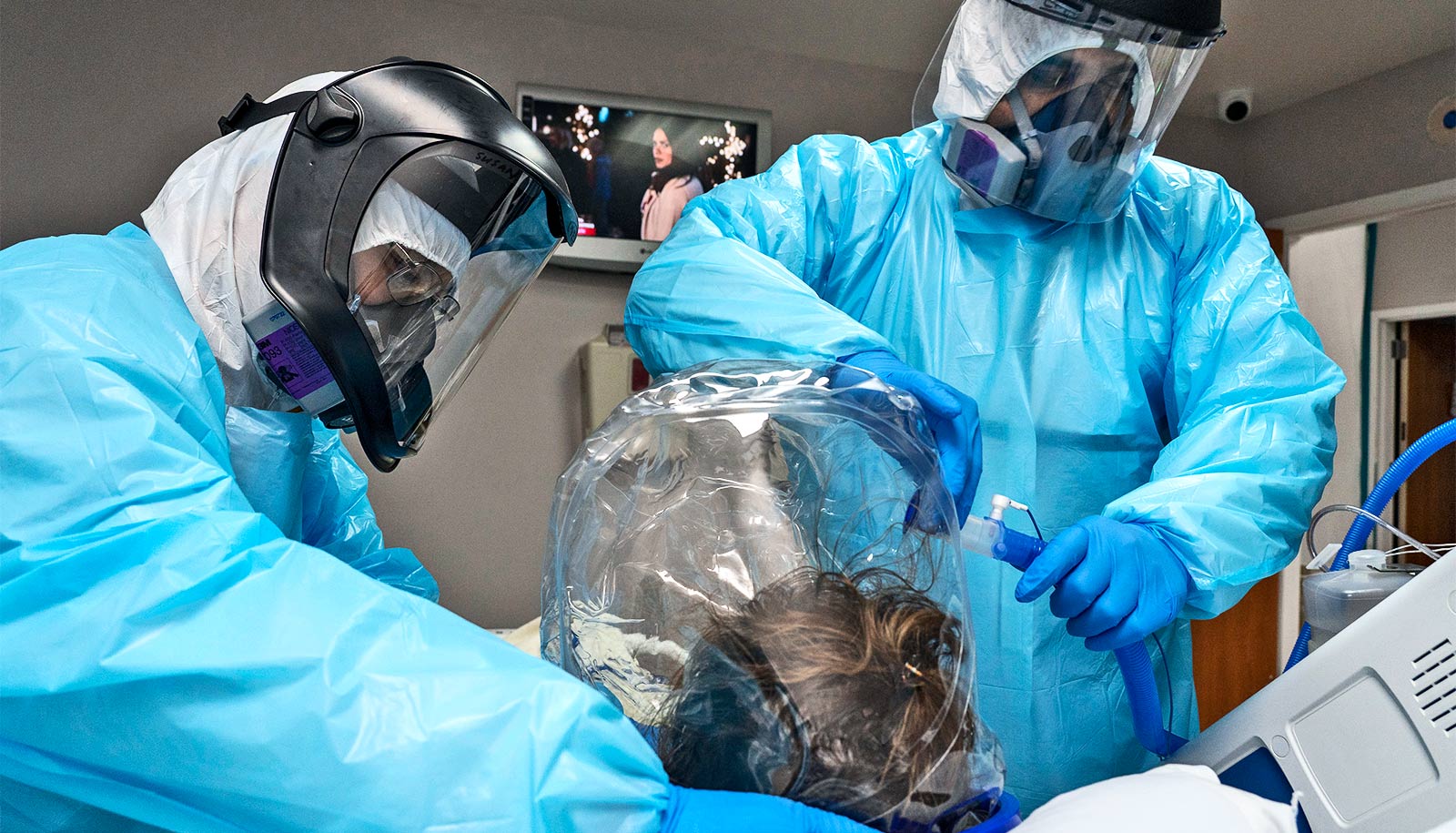
(Credit: Getty Images )
Molecule warns skin of Zika invasion
Skin is the first line of defense when a mosquito infected with Zika virus bites. New research with mice clarifies what happens.

When a mosquito infected with Zika virus bites, skin is the first line of defense against infection, a new study shows.
Now, using a mouse model, researchers have pinpointed exactly how the skin responds to the invader.
Researchers showed that a messenger molecule called IL-27 acts as a security guard for the skin, signaling skin tissue to ramp up production of anti-viral proteins, the body’s main league of warriors against the virus.
The researchers also found that IL-27 only signals for help when Zika virus enters through the skin—when it enters the body some other way, IL-27 does not respond.
Notably, the neurological symptoms associated with Zika virus disease are more pronounced in the absence of IL-27 signaling.
“The signaling of IL-27 to induce antiviral proteins is part of our body’s innate immune response,” says Amanda MacLeod, associate professor of dermatology in the Duke University School of Medicine and lead author of the study in Science Advances.
“What’s particularly interesting is that, especially in the absence of acquired immunity and memory responses, our natural innate immune system is highly relevant as it acts much faster—anywhere from hours to a day—than acquired immunity. Most vaccines require boosters over months or years to attain host immunity.”
While innate immunity can decide between “live and die,” adaptive immune responses are pivotal in establishing memory that protects the human body from future challenges with the same pathogen, MacLeod says.
Zika virus, along with other viruses such as HIV and SARS Cov-2, has proliferated among human populations due to limited protective innate immune responses and the lack of a preventive vaccine. These viruses are able to evade immunity in a variety of ways.
Stimulation of the natural protective antiviral pathways may provide the path to new therapeutic benefits, while limiting immune-mediated tissue damage, also known as a virus-induced cytokine storm, researchers say.
“Whether our results could also potentially be applied to other viral pathogens such as SARS Cov-2, the pathogen that causes COVID-19, remains to be tested in future studies,” MacLeod says.
“Epithelial tissues including the skin, lung, intestines, and the urogenital tract share some commonalities but also have significant differences in their barrier architecture and their immune responses and so there are similarities and differences between viruses.”
The National Institutes of Health, the National Institute of Arthritis and Musculoskeletal and Skin, and the National Institute of Allergy and Infectious Diseases funded the work.
Source: Duke University
The post Molecule warns skin of Zika invasion appeared first on Futurity.
Share this article:
This article uses material from the Futurity article, and is licenced under a CC BY-SA 4.0 International License. Images, videos and audio are available under their respective licenses.
Related Articles:
1 protein controls West Nile and Zika replication
Nov. 7, 2019 • futurityStronger early immune reaction might make COVID worse
Dec. 3, 2020 • futurityLinks/images:
- https://www.futurity.org/skin-cells-psoriasis-atopic-dermatitis-squames-2306762/
- https://www.futurity.org/zika-replication-amino-acids-formulation-2134922/
- https://doi.org/10.1126/sciadv.aay3245
- https://www.futurity.org/hiv-antibodies-immune-system-2227352/
- https://www.futurity.org/covid-19-artificial-intelligence-severe-respiratory-disease-2320402/
- https://www.futurity.org/zika-skin-viruses-2323862-2/
- https://www.futurity.org


